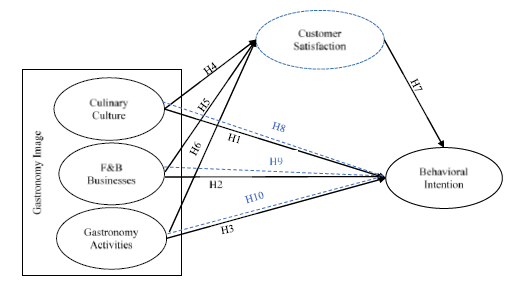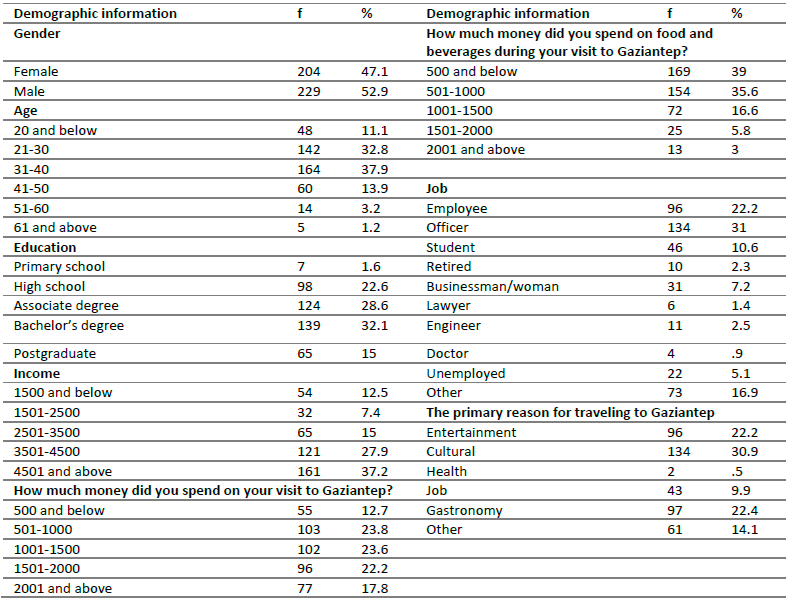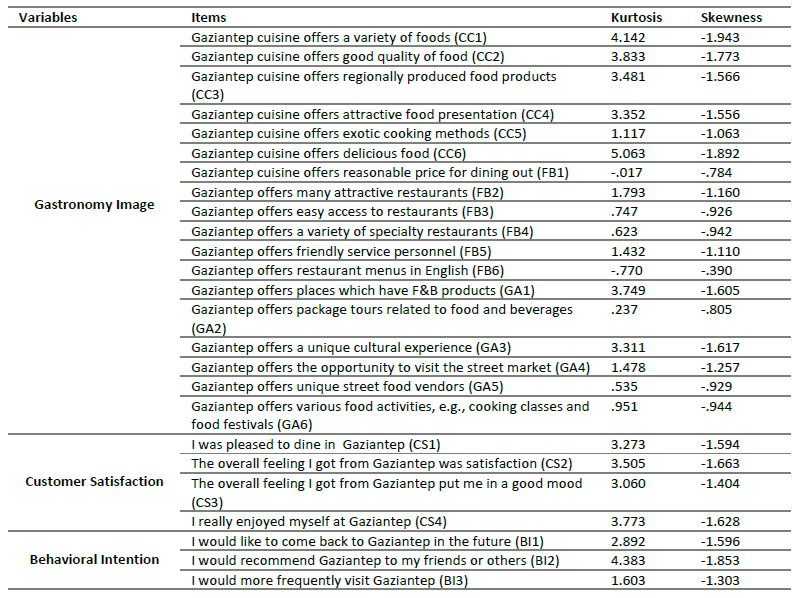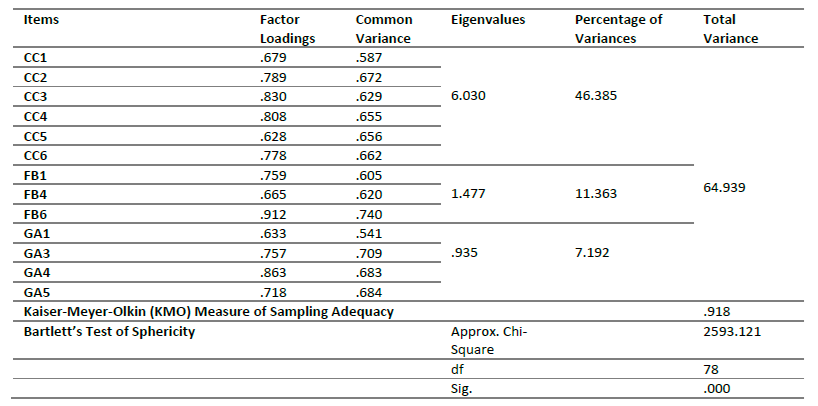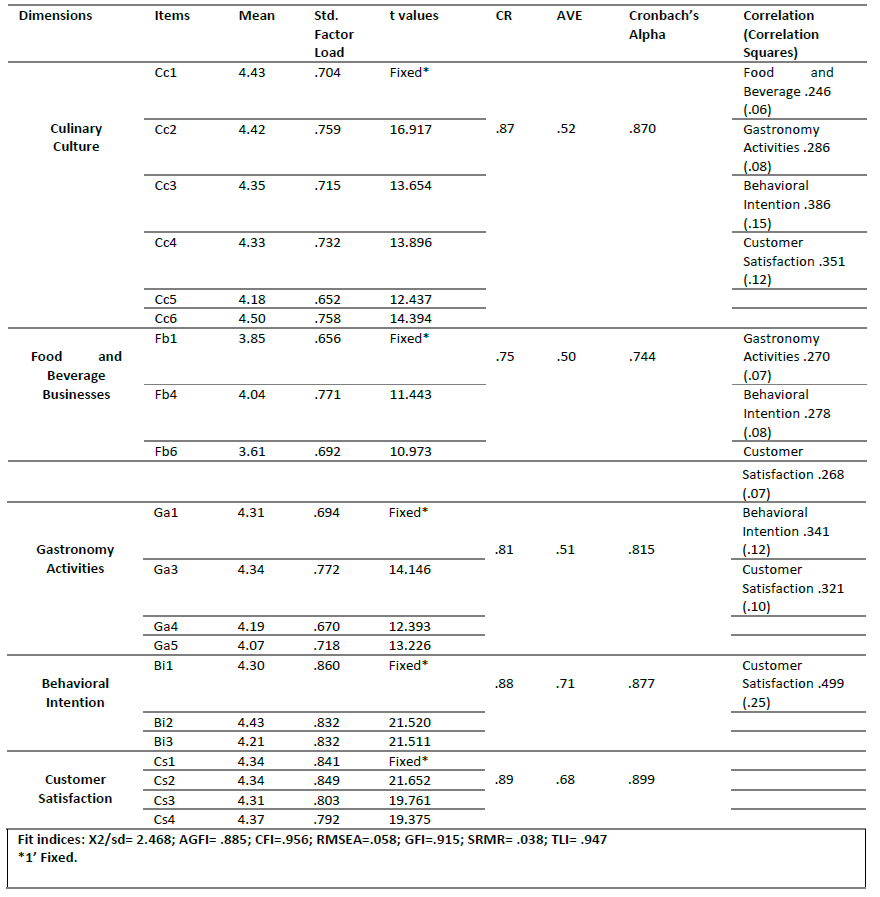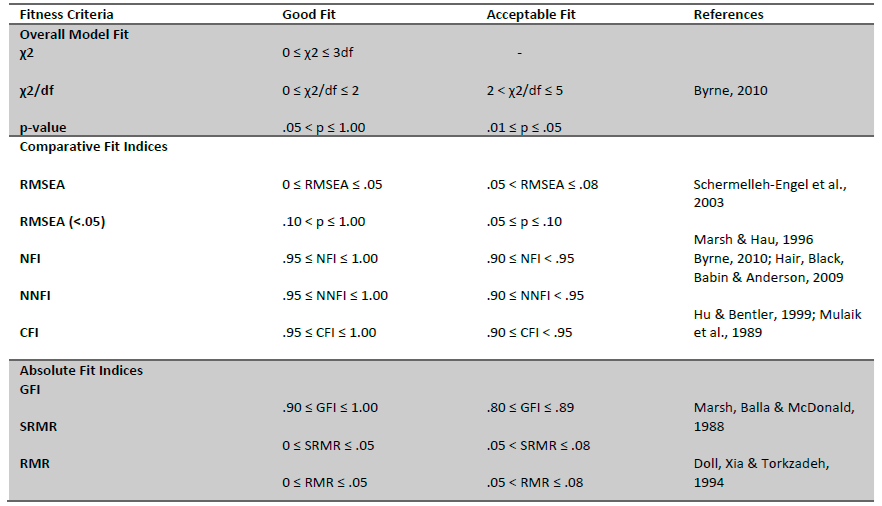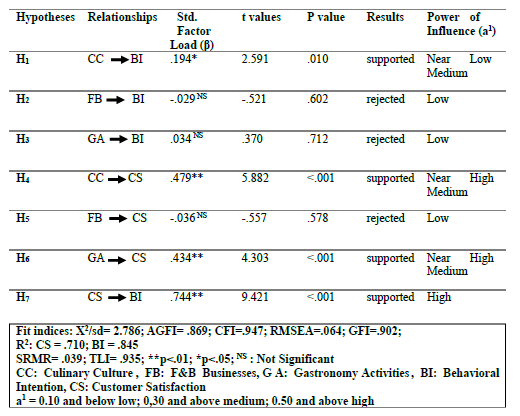Introduction
In the tourism industry, where competition is increasing day by day, gastronomy tourism is among the types of tourism that enable differentiation between businesses and regions (Kivela & Crotts, 2006). The main sources of motivation for tourists to visit a destination have been the subject of many studies (Kivela & Crotts, 2005, 2006; Okumus, Okumus, & McKercher, 2007; Quan & Wang, 2004). In some of these studies, activities such as producing, preparing, and tasting new and unique food and beverage items specific to that destination constitute the main source of motivation (Kivela & Crotts, 2005, 2006; Promsivapallop & Kannaovakun, 2019). On the other hand, some studies identify gastronomy-related activities as a secondary source of motivation (Okumus et al., 2007; Quan &Wang, 2004). While there are differences in the primary motivations of tourists to participate in tourism activities, there are also tourists who enjoy trying exotic flavors and regional delicacies produced and consumed in the visited destination and eliminate their thoughts and prejudices about that destination through these food items (Kivela & Crotts, 2006; Santos, Santos, Pereira, Richards, & Caiado, 2020). A study conducted in Hong Kong found that 21% of tourists visiting the region traveled for gastronomic tourism purposes The same study also found that the tourists who visit the region for gastronomy tourism have visited this destination repeatedly due to gastronomic elements. Therefore, gastronomy tourism creates satisfaction among tourists who visit the region. This hypothesis is supported by the studies of Jiménez Beltrán, López-Guzmán & Santa-Cruz (2016). Indeed, in the related study, gastronomy tourism is described as a type of tourism that creates an alternative to sun, sea, and sand tourism and thus creates customer satisfaction. As a result, tourists develop a desire to revisit the destination (Quee Ling, Ab Karim, Othman, Mohd Adzahan, & Ramachandran, 2010). Another study emphasized that the destination preference process of tourists is influenced by behavioral intention (Jalilvand & Samiei, 2012).
In this study, gastronomy image, which is considered one of the building blocks of destination image in many previous studies, was taken as an independent variable. However, with the developments in this field and the increase in the number of academic studies, it is now thought that gastronomy tourism can be a single attraction factor for a destination. Indeed, some studies share this perspective (Ab Karim & Chi, 2010; Choe & Kim, 2018). Indeed, some studies emphasize that gastronomy image has the power to influence the destination image on its own (Promsivapallop & Kannaovakun, 2019; Wang, 2015).
The provided information highlights the numerous benefits that a destination can derive from a strong gastronomy image. These advantages encompass elevated levels of customer satisfaction, an increased likelihood of repeat visits, and positive recommendations to others. This research specifically focuses on examining the interplay between gastronomy image, customer satisfaction, and behavioral intentions, while also exploring the potential mediating role of customer satisfaction in the relationship between gastronomy image and behavioral intentions. It is worth noting that no existing studies were found in the literature that specifically investigated this mediating role of customer satisfaction. The literature review conducted for this study did not yield any comprehensive investigations addressing this particular aspect. As such, this study aims to bridge this research gap and contribute to the existing body of knowledge. The main objective is to examine the impact of the gastronomy image on behavioral intentions and assess the potential mediating influence of customer satisfaction within this dynamic. From this perspective, the main purpose of this study is to test the effect of the gastronomy image on behavioral intention and the mediating role of customer satisfaction in this relationship. In this context, we attempted to explain the relationships between gastronomy image and behavioral intention, gastronomy image and customer satisfaction, and customer satisfaction and behavioral intention using statistical methods. We utilized the AMOS software to unveil the intermediary role of customer satisfaction in this relationship. To achieve this, data were collected from tourists who have visited the province of Gaziantep, serving as the focal point of the study.
2. Literature review and hypothetical model
2.1. Theoretical basis
Human behavior has always been the focus of researchers working in many areas (Batıbeki & Taşpınar, 2021; Taştan & Soylu, 2023). The Theory of Planned Behavior (TPB) plays a vital role in deciphering human behavior, especially in marketing research, where understanding human behavior is central to accomplishing marketing goals. Hence, understanding how human behavior is shaped and what factors influence it can directly predict its outcomes. TPB is a framework that outlines the various elements influencing human actions (Bailey, 2006). According to this theory, human actions are premeditated, and a certain group of factors shape these actions. The crux of the theory is the planning stage that individuals go through before exhibiting a certain behavior. This planning stage encompasses numerous influential factors in the implementation of the behavior (Fishbein & Ajzen, 2015). Key variables of human behavior include attitudes, social pressure, perceived control over behavior, intentions, and individual traits. Attitudes express people’s emotional and cognitive responses towards a specific behavior, while social pressure refers to behaviors that are determined by the expectations of other people in their environment. Perceived behavioral control represents people’s belief in their ability to control their actions. Intentions determine whether a person has sufficient motivation to perform a specific behavior (Mancı, 2022). Finally, personal characteristics refer to the individual factors that influence people’s behaviors (Ajzen, 1991).
Planned Behavior Theory helps to understand the reasons behind human behavior and develop strategies to encourage people to perform specific actions (Acuner & Keskin, 2022). According to the TPB, a person’s eating behavior arises from the interaction of various factors such as their attitudes, social norms, perceived behavioral control, gastronomy image, and customer satisfaction (Karahan, 2018; Mercan, 2015).
A destination image is argued to be formed by tourist perceptions, along with cognitive and affective components (Baloglu & McCleary, 1999; Karakus & Çamlıca, 2021). Accordingly, it can be said that the gastronomy image of a destination represents a tourist’s cognitive and emotional perception of food and drink in a particular place. After tourists have gained a real visit experience in a destination, it is suggested that the perception of that destination can be enhanced with gastronomic elements (Beerli & Martín, 2004). Qu, Kim & Im (2011), in their studies, emphasize that in the branding process of a destination, especially if the image is managed correctly and effectively, the destination image can be strengthened for potential customers. According to the authors, through effective management of destination image in the branding process, a destination can strengthen its image for potential customers and become a successful and unique destination that stands out from its competitors.
Gastronomy tourism can be thought of as not only a type of tourism but also as a marketing tool that undertakes significant tasks in promoting a destination (Oğan & Durlu-Ozkaya, 2021). Activities related to gastronomy tourism can provide the opportunity for a destination to continue tourism activities throughout the year. Thus, the advantages of socio-cultural interaction, economic activity, and preservation and development of infrastructure and superstructure brought by tourism can extend to the whole year in destinations where gastronomy tourism is actively implemented. This demonstrates the role of gastronomy tourism in promoting a place. Additionally, gastronomy tourism creates a unique advantage for destinations that cannot benefit from “sea, sand, and sun” tourism. Thus, such a destination can create its own unique type of tourism. On the other hand, for a destination already generating income from tourism, gastronomy tourism can provide advantages such as extending the length of stays, increasing the number of accommodations, attracting more investments to the region, increasing customer satisfaction, spreading tourism income to the base, and increasing the number of repeat visits, which in turn can increase recommendations for the region (Kivela & Crotts, 2005; Williams & Soutar, 2009). Tourism destinations that want to take advantage of these benefits should pay attention to the gastronomy image that already exists or will be formed in the minds of tourists. A good gastronomy image can differentiate and develop a destination from other destinations, while a bad image can lead to the end of a destination (Promsivapallop & Kannaovakun, 2019).
Based on this, gastronomy image, customer satisfaction, and behavioral intentions have been brought together in the literature. Studies on the variables and their relationships have been summarized below.
2.2 Hypothetical model
2.2.1. The effect of gastronomy ımage on behavioral ıntention
The available literature offers limited studies exploring the connection between gastronomy image and behavioral intentions as a comprehensive construct. Within this context, researchers have investigated the relationship between gastronomy image and behavioral intentions across various sub-dimensions, as evidenced by studies conducted by Ab-Karim et al. (2011), Aksoy & Çekiç (2019), Bakkaloğlu (2022), Chi et al. (2013), Choe & Kim (2018), Lertputtarak (2012), Öykü Akyol (2019), Quee Ling et al. (2010), Tayfun et al. (2019), and Wang (2015). The underlying reason for examining the correlation between these two variables is that a positive gastronomy image tends to foster behavioral intentions among tourists, such as the intention to revisit, engage in positive word-of-mouth communication, and exhibit a willingness to spend more (Bakkaloğlu, 2022; Wang, 2015).
Drawing from the insights gained from these studies, several hypotheses have been formulated concerning the relationship between culinary culture, food and beverage (F&B) businesses, gastronomic activities, and behavioral intentions.
H1: Culinary culture has a positive and significant effect on behavioral intention.
H2: F&B businesses have a positive and significant effect on behavioral intention.
H3: Gastronomic activities have a positive and significant effect on behavioral intention.
2.2.2. The effect of gastronomy image on customer satisfaction
When examining the studies that investigate gastronomy image and customer satisfaction, no study that examines these two concepts as a whole has been encountered. Therefore, studies that explain these concepts on a dimensional basis have been examined (Eren & Çelik, 2017; Işın & Yalçın, 2019; Jiménez Beltrán et al., 2016; Kandampully & Suhartanto, 2000). Based on this review, it was observed that gastronomy image, including culinary culture, F&B businesses, and gastronomic activities, leads to customer satisfaction. Therefore, these two variables are related to each other. The hypotheses that indicate the relationship between these variables are as follows:
H4: Culinary culture has a positive and significant effect on customer satisfaction.
H5: F&B businesses have a positive and significant effect on customer satisfaction.
H6: Gastronomic activities have a positive and significant effect on customer satisfaction.
2.2.3. The effect of customer satisfaction on behavioral intention
A review of studies concerning customer satisfaction and behavioral intention reveals that these two concepts are often linked (Baker & Crompton, 2000; Chen & Chen, 2010; Martin et al., 2008). This pairing of variables is typically done to explore if there is an intermediary effect between the perception of gastronomy and behavioral intentions. Thus, in this investigation, both concepts will be studied concurrently. The following hypotheses will examine these pertinent variables:
H7: Customer satisfaction has a positive and significant effect on behavioral intention.
2.2.4. Mediating role of customer satisfaction
When examining the relevant literature, it was observed that no study examines gastronomy image (culinary culture, F&B businesses, gastronomic activities), behavioral intentions, and customer satisfaction variables together as a whole. However, in studies that focus on gastronomy image in terms of its dimensions, it is stated that customer satisfaction can be increased (Fabianto, 2018; Kandampully & Suhartanto, 2000). Studies focusing on customer satisfaction and behavioral intention also emphasize that customer satisfaction is a precursor variable for behavioral intention (Ryu & Han, 2010; Ryu, Han, & Kim, 2008; Ryu, Lee, & Kim, 2012). Therefore, this study examines gastronomy image, customer satisfaction, and behavioral intentions together. The model generated for this set of relationships can be seen in Figure 1. Hypotheses that demonstrate the relationship between these three concepts are as follows:
H8: Customer satisfaction has a mediating effect on the relationship between culinary culture and behavioral intention.
H9: Customer satisfaction has a mediating effect on the relationship between F&B businesses and behavioral intention.
H10: Customer satisfaction has a mediating effect on the relationship between gastronomy activities and behavioral intention.
3. Research design
3.1. Research location
The population of the study consists of domestic and foreign tourists traveling to Gaziantep. Gaziantep was chosen as the destination of the study because it is one of the oldest and most important settlements in the world and Turkey, thanks to its rich history and geographical location. This historical background, richness, and unique geographical location have enabled Gaziantep to have a deep-rooted cuisine. The geographical location, regional dishes, historical development, and dietary habits of Gaziantep have shaped the Turkish culinary culture. When examined within the framework of gastronomic elements, Gaziantep is also significant in terms of organic and natural product diversity. With its rich variety of dishes, Gaziantep has an important and distinctive position among the world’s cuisines. The Gaziantep cuisine, which has many unique varieties that are not found in any other cuisine, offers around 291 different types of dishes, desserts, and drinks (Giritlioğlu, 2020). In addition, as of June 2020, Gaziantep has 23 registered geographical indications for gastronomic products by the Turkish Patent and Trademark Office (Türk Patent ve Marka Kurumu, 2020). As of August 2022, Gaziantep has 98 geographical indication products 12 of which carry a designation of origin and 86 of which carry a geographical indication of source. This shows that Gaziantep is making progress in the field of gastronomy every year. In addition to these, cooking and chef courses are offered for local and foreign tourists in Gaziantep. The local people benefit greatly from these courses, and qualified staff are provided to businesses (Erkılıç, 2019). Foreign language courses are also provided by the same institutions for the benefit of the local people. In addition, various support is provided to F&B businesses in the region by the Chamber of Commerce and Industry. In recent years, due to COVID-19, the Republic of Turkey has provided support to all F&B businesses in the country, including those in Gaziantep, under certain conditions. Lastly, F&B businesses operating in this destination receive employee support through the Turkish Employment Agency (İŞKUR). The wages and insurance payments of these employees are provided through İŞKUR for a certain period.
Gaziantep province earned its place in the UNESCO Creative Cities Network in 2015 with its gastronomic elements (UNESCO Türkiye Milli Komisyonu, 2020). Gaziantep, with such important gastronomic elements within it, supports gastronomy in terms of transportation and infrastructure facilities, both in Turkey and worldwide. Considering the 2021 data of the Gaziantep Provincial Directorate of Culture & Tourism, a total of 765,536 tourists visited this destination. The majority of these tourists are domestic tourists (653,593) (Tuik.gov.tr, 2019). These statistics highlight that Gaziantep destination is an important destination for tourists. As Gaziantep is so significant in terms of gastronomy tourism, it has been chosen as the universe for this study.
3.2. Measurement scale
The survey of current research consists of two parts. In the first part, we attempt to measure the extent to which participants agree with the variables of gastronomy image (independent), behavioral intention (dependent), and customer satisfaction (mediator). In this context, participants' perception of the gastronomy culture in Gaziantep was used to measure the gastronomy image. To do so, we assessed the diversity and quality of the local cuisine and the uniqueness of Gaziantep's gastronomy, drawing from Wang (2015) for gastronomy image, Ryu et al. (2008) for behavioral intention, and customer satisfaction. To ensure cultural relevance, we adapted the scale statements to better align with Turkish culture and the gastronomy elements specific to Gaziantep destination. In this research, Wang's (2015) gastronomy image scale was employed, emphasizing its dimensions, including culinary culture, food and beverage establishments, and gastronomy activities. It's important to note that the definitions of gastronomy image in the literature consistently explain the concept through the dimensions found in the mentioned scale. Furthermore, we utilized the widely recognized study by Ryu et al. (2008) to measure behavioral intention and customer satisfaction variables. We chose this approach to minimize any potential biases or negative responses from the participants. The second part of the survey gathered data on participants' gender, age, education level, monthly income, and nationality. Additionally, we included descriptive questions about their spending habits during visits to Gaziantep, including expenditures on food and beverages and the primary reasons for traveling to Gaziantep. These questions were added to the survey to provide a more comprehensive understanding of the sample and to facilitate a more thorough interpretation of the findings.
During the field research, participation in face-to-face surveys was limited due to the COVID-19 pandemic. Therefore, an online survey was also conducted. Before the surveys were administered to the participants, it was confirmed that they had benefited from the goods and services produced by F&B businesses located in Gaziantep destination. This statement was also clearly stated in the survey description section of the online surveys. To ensure the validity and reliability of the survey, the reliability (Cronbach’s Alpha) of the surveys applied to 120 tourists was examined first. The results were 0.820 for kitchen culture, 0.730 for F&B businesses, 0.790 for gastronomy activities, 0.840 for behavioral intention, and 0.870 for customer satisfaction. These results indicate that the scales that make up the survey are above the threshold value of 0.70 (Hair, Black, Babin, & Anderson, 2009).
3.3. Data collection
The research was conducted between July and November 2021 at the previously specified restaurant businesses in the Gaziantep destination. Surveys were left for F&B businesses and travel agencies operating in Gaziantep. In this regard, 70 surveys were returned. Due to the COVID-19 pandemic, tourists avoided filling out surveys face-to-face.
Therefore, the online survey was shared with F&B businesses and travel agencies within the scope of the study. A total of 370 online surveys were reached in a 5-month period. While 63 of the face-to-face surveys were determined to be usable, there was no elimination from the online surveys designed to be completed by marking all the questions. It was determined that 433 out of a total of 440 questionnaires were usable survey forms. Since this number is higher than the sample size of 385 people calculated for cases where the population is not known, it can be said that the collected questionnaires have the power to represent the population (Byrne, 2010; Çokluk, Şekercioğlu, & Büyüköztürk, 2016).Analyzing the demographic details of the study participants revealed that a majority, specifically 52.9%, were male tourists. Delving deeper into the data and referring to Table 1, it was found that the largest group fell within the age bracket of 31-40 years (37.9%), held a bachelor’s degree (32.1%), and had a monthly income exceeding 4501 TL (37.2%).
4. Results
4.1. Pre-analysis requirements
The study involved examining the multivariate normal distributions of the data. This analysis confirms the normal distribution of all variables, both collectively and individually (Çokluk et al., 2016: 16). In simpler terms, this suggests that the combined influence of two variables adheres to a normal distribution (Hair, Black, Babin, & Anderson, 2013). Multivariate normal distributions can be assessed through graphical and statistical methods. In this particular investigation, Skewness and Kurtosis tests, and statistical methods, were utilized (Hair et al., 2013: 31-32). As per Curran, West & Finch (1996), the data are considered normally distributed if the skewness values range between -3 and +3, and kurtosis values fall between -7 and +7 (Curran et al., 1996; Dedeoğlu & Boğan, 2021). Accordingly, for this study, these ranges were taken as a benchmark. The results of the normality distribution tests of the scale statements utilized in this study can be found in Table 2.
In this investigation, factor analysis was employed to validate construct reliability. This method is commonly used in scale development, adjusting a scale for a new study, or verifying the construct reliability of scales when a scale is applied to a different sample (Çokluk et al., 2016: 177). For this study, given that the gastronomy image scale hadn’t been translated to Turkish or used in this location previously, it was initially subjected to an Exploratory Factor Analysis (EFA). Following this, the measurement model, which included the customer satisfaction and behavioral intention scales in the survey study, was developed. Its construct validity was then evaluated using a Confirmatory Factor Analysis (CFA). Since the scales for customer satisfaction and behavioral intention were already translated into Turkish and used in this location, exploratory factor analysis was not necessary.
In exploratory factor analysis, it is recommended that statements with factor loadings below 50% should not be included in the analysis, while the total explained variance is expected to exceed 0.60 (Hair et al., 2013: 103-109). In determining factor loadings in multidimensional scales, factor eigenvalues are expected to be equal to or greater than 1 (Çokluk et al., 2016: 239). Likewise, the total variance explained is expected to be 60% or more. In this study, the factor loadings of the statements were determined as 0.50, and the statements with factor loadings below 0.50 were removed from the analysis in order: FB2, FB3, FB5, GA2, and GA6. When these statements were removed from the analysis, the statement with the lowest factor load was first removed from the analysis and the analyses were repeated.
Table 3 shows the EFA results for the gastronomy image scale. The eigenvalues given in this table are between the desired values of CC= 6,030 and FB= 1,477. Since the GA is very close to the desired value of 0,935 and this scale aims to conduct exploratory research, the eigenvalue of GF is also accepted (Hair et al., 2013). The total common variance explained by these three dimensions is 64,939. It is observed that it is above the desired threshold values. Therefore, as a result of the EFA results, it can be said that the validity of the gastronomy image scale is ensured.
4.2. Reliability and validity analysis
When the measurement model given in Table 4 was examined, the smallest AVE value for the variables was found to be 0.50 for the F&B businesses dimension under the gastronomy image variable. The behavioral intention variable (0.71) had the highest AVE value. These values meet the minimum required value of 0.50 AVE (Hair et al., 2013). When the CR values are analyzed, the lowest value is observed in the F&B dimension under the gastronomy image variable (0.75). The highest CR value is the customer satisfaction variable with 0.89. These values are above the minimum value of 0.70 (Hair et al., 2013). When the Cronbach’s alpha coefficients used to check the reliability of the scales are examined, it is observed that the lowest value is 0.744 in the F&B businesses dimension under the gastronomy image. The highest Cronbach’s alpha is observed in the customer satisfaction variable with a value of 0.899. These values are above the minimum Cronbach’s alpha value of 0.70. Since all AVE and CR values mentioned in this section are above the desired levels, it can be said that convergent validity is ensured. In addition, since the correlation squares between the relevant latent variables are below the AVE values, it can also be said that discriminant validity is ensured. Finally, since the Cronbach’s alpha values indicating the reliability of the scales are above the desired levels, it can be said that the reliability of the scales is ensured.
Table 5 presents the goodness-of-fit indices that will be employed in the confirmatory factor analysis and structural equation modeling for this study.
4.3. Correlation analysis
The correlation coefficients between the dimensions of the gastronomy image, behavioral intention variable, and customer satisfaction variable are given. When Table 6 is examined, it is observed that the dimensions that make up the gastronomy image are positive and significant with each other and with the behavioral intention variable and customer satisfaction variable at p=0.01 level. It is observed that the highest correlation between these variables is between behavioral intention and customer satisfaction (0.804**), and the lowest correlation is between F&B businesses and behavioral intention (0.398** ). From this point of view, it is possible to talk about increasing and decreasing correlations between the variables in the scale.
4.4. Hypothesis testing
4.4.1. Direct effect testing
In this study, Structural Equation Modeling (SEM) and AMOS 24 package software were used to analyze direct and indirect effects (Wang, Wen, Li, & Fang, 2022). Power of Influence of the hypotheses created in this study were interpreted according to the intervals specified by Kline, (2011). The values stated by the researcher are as follows. Standardized factor loadings (β) values of 0.10 are interpreted as low, β values around 0.30 are interpreted as medium, and β values greater than 0.50 are interpreted as high. R2 values are also Kline (2011: 185) According to the ‘R2 values’. Accordingly, R2 values are interpreted as low if they are less than 0.01, medium if they are around 0.10, and finally high if they are greater than 0.30. The model developed for this study was subjected to SEM. Table 7 displays the structural equation modeling (SEM) results for the model used in this study.
In light of these findings, culinary culture positively and significantly affects behavioral intention (β=.194; t=2.591; p<.05). As a result of this finding, hypothesis H1 is supported. F&B businesses, another dimension of gastronomy image, have an insignificant and negative effect on behavioral intention (β=-,029; t=-,521; p>.05). Therefore, H2 hypothesis is rejected. The relationship between gastronomy activities, the third dimension of gastronomy image, and the behavioral intention was found to be insignificant and positive (β=.034; t=.370; p>.05). For this reason, hypothesis H3 is also rejected.
It is possible to mention a positive and significant relationship between culinary culture, one of the dimensions of gastronomy image, and customer satisfaction (β=.479; t=5.882; p<.001). Therefore, hypothesis H4 is supported. There is a negative and insignificant relationship between F&B businesses and customer satisfaction (β=-.036; t=-.557; p>.05). Due to this relationship, the hypothesis H5 is rejected. When the relationship between gastronomy activities and customer satisfaction is analyzed, it is possible to mention a positive and significant relationship (β=.434; t=4.303; p<.001). Due to this relationship, the hypothesis H6 is supported. Finally, the relationship between customer satisfaction and behavioral intention is positive and significant (β=.744; t=9.421; p<.001). As a result of this relationship, the hypothesis H7 is supported.
According to the specified R2 values (R2 of customer satisfaction is 0.710 and R2 of behavioral intention is 0.845), the R2 ratios of both dependent variables can be considered high. Accordingly, the rate of gastronomy image explaining customer satisfaction is 71%. In other words, the antecedent variable gastronomy image explains 71% of the variance in the dependent variable customer satisfaction. On the other hand, it can be said that the antecedent variable of gastronomy image explains 84% of the variance in the dependent variable of behavioral intention.
4.4.2. Indirect effect testing
The mediating role of customer satisfaction is examined through the bootstrap confidence intervals method. The bootstrap method is one of the most robust and reliable methods for indirect effects under most conditions. (Preacher & Hayes, 2008). At the same time, bootstrapping can be said to be a more reliable and valid method for revealing the effect of intervening variables (Hayes, 2009: 412). For this reason, the bootstrap method was also used in this study to reveal the mediating role of customer satisfaction. Among the bootstrap methods, the BC bootstrap technique was preferred (Hayes, 2009; Preacher & Hayes, 2008). In the BC bootstrapping technique, a certain number of samples must first be determined. At this point, the number of 1000 repetitions and 95% confidence interval accepted in the literature were determined (Cheung & Lau, 2008). The mediating role of customer satisfaction by the BC bootstrapping method is given in Table 8.
Table 8 Mediating Role of Customer Satisfaction
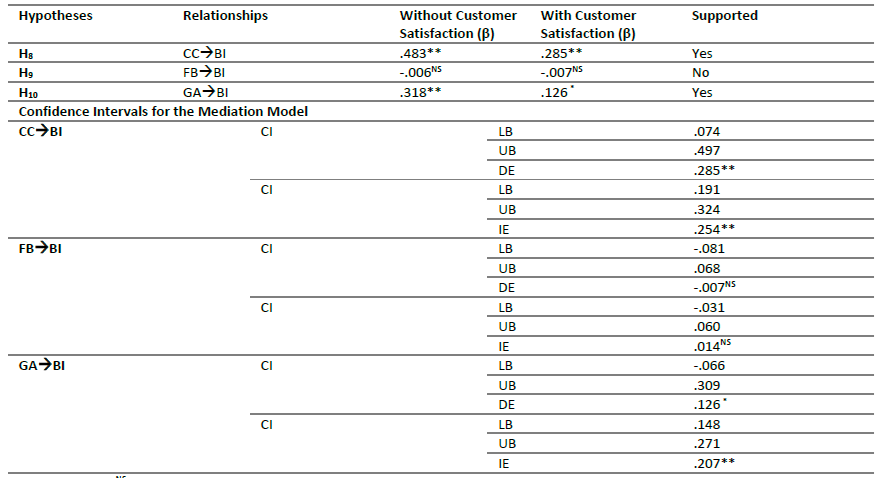
**p<.01; *p<.05; NS= Not Significant, Confidence Interval=CI, Lower Bound=LB, Upper Bound=UP, Direct Effect= DE, Indirect Effect=IE
Table 8 reveals that customer satisfaction plays a partial mediating role in the relationship between culinary culture and behavioral intention. The standardized indirect effect of customer satisfaction as a mediator is 0.254, falling within the bounds of 0.191 and 0.324 (β= 0.254; 99% CI [0.191 to 0.324]). These confidence intervals do not include zero (Preacher & Hayes, 2008), implying a mediating effect of customer satisfaction. However, because the direct effect is significant at p>0.01 level, we cannot claim full mediation by customer satisfaction. Hence, customer satisfaction has a partial mediation role in this relationship. Regarding the influence of customer satisfaction on the relationship between Food & Beverage (F&B) businesses and behavioral intention, the indirect effect is 0.014. Despite this value falling within -0.031 and 0.060, customer satisfaction does not mediate the relationship between F&B businesses and behavioral intention, since the value includes zero, and the indirect effect is insignificant (β= 0.014; 99% CI [-0.031 to 0.060]). Lastly, customer satisfaction’s indirect effect on the relationship between gastronomy activities and behavioral intention is 0.207, which lies between 0.148 and 0.271 (β= 0.207; 99% CI [0.148 to 0.271]). Therefore, customer satisfaction does mediate between gastronomy activities and behavioral intention (Hayes, 2009). However, because the direct effect is significant at p>0.05 level, we cannot claim full mediation by customer satisfaction. Although the significance levels in this effect have altered, it hasn’t reached the desired level, and we cannot claim full mediation in this relationship. However, there is a noticeable decrease in the relationship’s level of influence. Hence, a partial mediation effect exists between customer satisfaction, gastronomy activities, and behavioral intention. In light of these results, hypotheses H8 and H10 are validated, while hypothesis H9 is rejected.
5. Conclusions, discussion, and implications
5.1. Discussion of the results
In this study, the relationship between gastronomy image, behavioral intention, and customer satisfaction was tried to be revealed on the basis of dimensions and as a whole. At the end of the analysis, it was found that culinary culture has a positive and significant effect on behavioral intention. Therefore, the H1 hypothesis that “Culinary culture has a positive and significant effect on behavioral intention” is accepted. This finding implies that image perceptions of Gaziantep’s culinary culture have an impact on tourists’ behavioral intention to revisit, positive sentiment, and willingness to pay more. Another similar finding is that Gaziantep’s culinary culture increases the customer satisfaction levels of those who participate in gastronomy tourism in Gaziantep. This finding is confirmed by the acceptance of hypothesis H4 that “Culinary culture has a positive and significant effect on customer satisfaction”. Therefore, it can be said that Gaziantep destination can create satisfaction for tourists with its food and beverage diversity, quality of food and beverages, taste, and stories. According to the findings, it is also possible to talk about a positive relationship between image perceptions of Gaziantep’s gastronomy activities and customer satisfaction. Here, as mentioned before, hypothesis H6 that “Gastronomy activities have a positive and significant effect on customer satisfaction” is accepted. Therefore, food and beverage activities in Gaziantep destinations increase the satisfaction level of tourists. Finally, the satisfaction of tourists visiting Gaziantep is transformed into behavioral intention, which is expected to be formed in different aspects. This finding is confirmed by the acceptance of hypothesis H7 that “Customer satisfaction has a positive and significant effect on behavioral intention”. In other words, it can be said that customer satisfaction leads to the intention to pay more for this destination, to revisit, and to engage in positive word-of-mouth communication. When these findings are examined within the scope of the theory of planned behavior, it can be concluded that if the tourists visiting Gaziantep are sufficiently involved in culinary culture and gastronomy activities, customer satisfaction can be achieved, and thus positive behavioral intentions can be developed in customers. It is because, as mentioned before, intentions determine whether a person has sufficient motivation to perform a certain behavior (Mancı, 2022).
In the second part of the study, the studies of Chi et al, (2010); Choe & Kim, (2018); Lertputtarak, (2012); Quee Ling et al., (2010) & Wang, (2015) were examined. In these studies, positive relationships between gastronomy image, culinary image, food image, and behavioral intentions are mentioned. In the current study, unlike these studies, it is not possible to talk about a direct positive effect of gastronomy image on behavioral intentions. In other words, the dimensions of F&B businesses and gastronomy activities that constitute the gastronomy image do not statistically and significantly affect the variable of behavioral intention. Therefore, the hypotheses H2, H3, and H5 are rejected. In this study, the averages of F&B businesses and gastronomy activities, which are considered as the dimensions of gastronomy image, are lower than the averages of other variables. As a result of the hypothesis tests, it is observed that two of the rejected hypotheses are the hypotheses formed for the F&B businesses dimension, which has the lowest average, and the other rejected hypothesis belongs to the gastronomy activities dimension, which has the second lowest average after F&B businesses. In this context, the statements of these dimensions were analyzed. At this point, it can be said that the level of service quality provided by the F&B businesses in the region has been evaluated in terms of the service staff doing their job with a smiling face and correctly, the ease of access to the restaurant establishments, the diversity of the restaurant establishments, and the relationship between the service provided by the restaurant establishments and the wage policy, and although the averages of the distributions of the responses to these statements are above 3 (Undecided), they are not close to the level of 5 (Strongly Agree) where the F&B businesses are found to be excellent. In addition, the research data was collected during the peak period of the COVID-19 pandemic. During this period, at tables under 70 cm in restaurant establishments, guests could sit diagonally and two people at a table. At tables above 70 cm, there had to be a distance of 60 cm between each guest and a distance of 1.5 meters from other tables. For this reason, the space reserved for guests is limited in businesses, and there has been a decrease in the number of guests that businesses can serve in one day. In addition, while basic costs remained the same during this period, product and service prices increased due to the decrease in the number of guests. Some businesses also experienced staff layoffs. The current staff working in restaurants may have lost morale and motivation due to the fear of being laid off at any time (Sağlık Bakanlığı, 2020: 143). On the other hand, the questionnaires of this study were applied in 23 restaurant establishments previously mentioned in Gaziantep destination. Among these restaurants, some establishments produce high-quality goods and services as well as those that produce low-quality goods and services. In the second part of the questionnaire, tourists visiting Gaziantep destination were asked how much they spend on food and beverages in this destination. From the responses, it was found that most of the participants spent 500 TL or less on food and beverages. Therefore, it can be said that the majority of the tourists who filled out the questionnaire benefited from the goods and services produced by F&B businesses with medium and low-quality products and prices. Therefore, the expected positive and significant effect of the service quality provided by F&B businesses on the behavioral intentions of tourists visiting the region may not have been determined. On the other hand, the behavioral intention of tourists may not have developed due to the lack of food-tasting tours, food festivals, and cooking courses offered by Gaziantep destination or due to the fact that few tourists benefit from these opportunities. According to these explanations, this research is Bakkaloğlu, (2022); While Lertputtarak (2012) differs from the studies, Ab-Karim et al. (2011); and Chi et al. (2013) reveal findings that supported their studies.
In the field research of this study, the mediating role of customer satisfaction in the relationships between the dimensions of culinary culture, F&B businesses, and gastronomy activities that constitute gastronomy image and behavioral intention was tested through structural equation modeling. According to the findings, customer satisfaction has a partial mediating role in the relationship between culinary culture, the first dimension of gastronomy image, and behavioral intention. Therefore, it can be said that this study is important as it fills this gap in the literature. As mentioned above, the findings show that customer satisfaction does not have a mediating effect between the catering dimension of gastronomy image and behavioral intention. There is no direct comparison with this finding in the literature. However, according to Ryu et al. (2008), contrary to the findings of the present study, customer satisfaction has a mediating effect between restaurant image and behavioral intention. This finding, which is not similar to the literature, was evaluated in terms of the goods and services offered by the F&B businesses operating in Gaziantep, satisfaction with the quality and variety of these services, easy accessibility of tourists to restaurant establishments, and provision of restaurant variety. It is known that the averages of these distributions in which F&B businesses are evaluated are concentrated on “undecided”. It was also found that these averages were not close to the perfect level of “strongly agree”. Therefore, it can be said that customer satisfaction does not strengthen the relationship between F&B businesses and behavioral intention. Finally, customer satisfaction was found to have a mediating effect on the relationship between gastronomy activities that constitute gastronomy image and behavioral intention. There is no study comparing this finding in the literature. For this reason, this finding in this study is important as it fills the gap in the literature. In short, the impact of the gastronomy activities dimension of image on behavioral intention can be further increased through customer satisfaction.
5.2. Conclusions
To measure the concept of Gastronomy image, which is the focus of this research, it has been examined from three dimensions: culinary culture, food and beverage businesses, and gastronomy activities. Initially, we aimed to uncover the relationship between these dimensions and behavioral intention. Following the analysis of data collected in Gaziantep, a statistically significant relationship was found between culinary culture and behavioral intention (H1=Supported). However, the H2 hypothesis, which explores the impact of food and beverage businesses on behavioral intention, was rejected. Similarly, the H3 hypothesis, designed to reveal the connection between gastronomic activities and behavioral intention, was also rejected based on statistical analysis.
On the other hand, the H4 hypothesis, which sought to establish the relationship between culinary culture and customer satisfaction, was found to be statistically significant. Conversely, the H5 hypothesis, which examined the relationship between food and beverage businesses and customer satisfaction, was rejected after analysis. In contrast, the H6 hypothesis, aimed at revealing the link between gastronomic activities and customer satisfaction, was statistically significant and thus accepted. Likewise, the H7 hypothesis, which investigated the connection between customer satisfaction and behavioral intention, was found to be statistically significant, leading to its acceptance.
To explore the mediating role of customer satisfaction in the effect of gastronomic image on behavioral intention, three hypotheses were developed. The analysis, conducted using the AMOS software, confirmed the acceptance of H8: "customer satisfaction has a mediating effect on the influence of culinary culture on behavioral intention." However, H9, which proposed that "customer satisfaction has a mediating effect on the impact of catering businesses on behavioral intention," did not yield statistically significant results and was therefore rejected. Finally, the H10 hypothesis, expressed as "customer satisfaction has a mediating effect on the influence of gastronomic activities on behavioral intention," was found to be significant as a result of the statistical analysis.
5.3. Theoretical implications
Research has primarily concentrated on the connection between culinary image, restaurant image, food image, hotel image, and behavioral intention (Ab-Karim et al., 2011; Aksoy & Çekiç, 2019; Chi et al., 2010, 2013; Choe & Kim, 2018; Öykü Akyol, 2019; Quee Ling et al., 2010; Wang, 2015: Ademoğlu & Şahan, 2023). However, there is a scarcity of studies exploring the correlation between variables like destination food image, restaurant image, food image, and customer satisfaction (Eren & Çelik, 2017; Fabianto, 2018). Numerous studies exist on the link between customer satisfaction and behavioral intention (Baker & Crompton, 2000; Chen & Chen, 2010; Martin et al., 2008), but there is a lack of comprehensive research demonstrating the mediating role of customer satisfaction in the impact of gastronomy image on behavioral intention. A few studies have looked at the mediating role of customer satisfaction in the relationship between restaurant image and behavioral intention (Ryu et al., 2008). Hence, this research is a significant contribution to literature as it takes a holistic approach to examining the relationship between elements of culinary culture, F&B businesses, gastronomy activities that make up gastronomy image, and behavioral intention, while also considering the mediating effect of customer satisfaction.
5.4. Practical implications
It is observed that the F&B business dimension of gastronomy image does not positively and significantly affect both behavioral intention and customer satisfaction. Therefore, based on hypotheses H2 and H5, Gaziantep destination managers should inspect F&B businesses. Thanks to these inspections, restaurant establishments will not be able to offer products and services to tourists below the standards predetermined by the ministry and the municipality. In this way, tourists will purchase goods and services at certain standards.
The most important result obtained by accepting hypotheses H6 and H7 in this study is that there is a positive and significant relationship between gastronomy activities and customer satisfaction and between customer satisfaction and behavioral intentions. This shows that the development activities carried out for gastronomy tourism in Gaziantep destination so far have not been in vain. These activities include cooking courses, foreign language courses, financial and moral support provided to F&B businesses, and employee support. These development activities are described in detail in the population and sample section. Continuing development activities is very important for the gastronomy image of the destination. Another suggestion based on the results of this study is to re-test the research model in a destination with a lower gastronomy potential and make a comparison. As a result of the comparison, the differences between the two destinations should be determined, and the activities that improve the gastronomy image, customer satisfaction, and behavioral intention of one destination should be implemented in other destinations. In this way, it will be possible to determine the activities that should be done without spending too much time and money in destinations where gastronomy potential is desired to be developed. Time and other costs will be minimized.
Tourists visiting Gaziantep cited gastronomy as a secondary reason for visiting this destination. As it can be understood from this result, even though the region is well-known for gastronomy, gastronomy ranks second as a reason for visiting the destination. Therefore, considering this result, new actions should be taken to shift gastronomy tourism to the first place among the preferences for visiting the destination.
5.5. Limitations and future research directions
Hypotheses H2 and H5, which were established with the dimension of F&B businesses that constitute the gastronomy image, were rejected. In addition, hypothesis H9, which measures the mediating effect of customer satisfaction in the relationship between F&B establishments and behavioral intentions, was also rejected. As mentioned before, the data of this study was collected during the period when the COVID-19 pandemic was experienced very intensely. Therefore, there may have been a decrease in the morale and motivation of the staff of F&B businesses in Gaziantep destination during this period, and the increase in food and beverage costs may have been reflected more on the products. For these reasons, there may not be a significant relationship between the variables mentioned above. If this study is repeated at a later date when the COVID-19 pandemic ends, the findings of the study to be conducted may be in line with the findings of previous empirical studies.
It is predicted that the selection of the gastronomy image scale in accordance with the current and extraordinary conditions of that destination, such as the COVID-19 pandemic, and special conditions such as whether the participants are traveling individually or with a tour, will enable the findings to be obtained to measure the image perception of that destination more accurately.
In this study, a model was proposed to reveal the relationship between gastronomy image, behavioral intention, and customer satisfaction, and this model was tested through structural equation modeling. In the future, the same study can be conducted in the same destination at certain intervals to reveal the reflections of the steps taken in tourism on gastronomy image.
It is possible to mention some limitations within the framework of this study. The first one is related to the province where the study was conducted and the sample. As it is known, the study was conducted in Gaziantep destination, and a total of 433 usable data were obtained as a result of the study. This limitation can be overcome by choosing a different destination in future studies or repeating the research in the same destination after the COVID-19 pandemic has passed. The second limitation is related to the fact that the study was conducted in Gaziantep destination between August and November 2022. During this period, the COVID-19 pandemic was felt intensely in the whole country, and the region was not preferred by foreign tourists due to travel restrictions. Tourists who visited the region were reluctant to participate in the survey. This limitation, like the first one, can be overcome by repeating the research model and hypothesis tests at a later date when the COVID-19 outbreak has completely disappeared. In this way, it can be said that the findings to be obtained in terms of foreign tourists will make important contributions to the literature.














